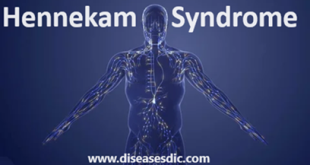What are head and neck cancers?
Head and neck cancer is a term that describes a range of cancers that begin in the head and neck region. Cancer can occur inside the sinuses, nose, mouth and salivary glands down through the throat. Although these cancers are different, they are treated similarly, so are considered as a group.
Skin cancers that start in the head and neck area have recently been classified as a type of head and neck cancer. Cancers that start in the eye, brain, oesophagus, thyroid and trachea, or in bone or muscle of the head and neck area are not usually classified as head and neck cancers.
Types of head and neck cancer
There are 5 main types of head and neck cancer, each named according to the part of the body where they develop. For more information about a specific type, visit the guide dedicated to that type of head and neck cancer on this same website.
- Laryngeal and hypopharyngeal cancer. The larynx is commonly called the voice box. This tube-shaped organ in the neck is important for breathing, talking, and swallowing. It is located at the top of the windpipe, or trachea. The hypopharynx is also called the gullet. It is the lower part of the throat that surrounds the larynx.
- Nasal cavity and paranasal sinus cancer. The nasal cavity is the space just behind the nose where air passes on its way to the throat. The paranasal sinuses are the air-filled areas that surround the nasal cavity.
- Nasopharyngeal cancer. The nasopharynx is the air passageway at the upper part of the throat behind the nose.
- Oral and oropharyngeal cancer. The oral cavity includes the mouth and tongue. The oropharynx includes the middle of the throat, from the tonsils to the tip of the voice box.
- Salivary gland cancer. The salivary gland produces saliva. Saliva is the fluid that is released into the mouth to keep it moist and that contains enzymes that begin breaking down food.
What are the causes and risk factors of head and neck cancers?
Alcohol and tobacco use (including smokeless tobacco, sometimes called “chewing tobacco” or “snuff”) are the two most important risk factors for head and neck cancers, especially cancers of the oral cavity, oropharynx, hypopharynx, and larynx. At least 75% of head and neck cancers are caused by tobacco and alcohol use. People who use both tobacco and alcohol are at greater risk of developing these cancers than people who use either tobacco or alcohol alone. Tobacco and alcohol use are not risk factors for salivary gland cancers.
Infection with cancer-causing types of human papillomavirus (HPV), especially HPV type 16, is a risk factor for some types of head and neck cancers, particularly oropharyngeal cancers that involve the tonsils or the base of the tongue. In the United States, the incidence of oropharyngeal cancers caused by HPV infection is increasing, while the incidence of oropharyngeal cancers related to other causes is falling.
Other risk factors for cancers of the head and neck include the following:
Paan (betel quid). Immigrants from Southeast Asia who use paan (betel quid) in the mouth should be aware that this habit has been strongly associated with an increased risk of oral cancer.
Preserved or salted foods. Consumption of certain preserved or salted foods during childhood is a risk factor for nasopharyngeal cancer.
Oral health. Poor oral hygiene and missing teeth may be weak risk factors for cancers of the oral cavity. Use of mouthwash that has a high alcohol content is a possible, but not proven, risk factor for cancers of the oral cavity.
Occupational exposure. Occupational exposure to wood dust is a risk factor for nasopharyngeal cancer. Certain industrial exposures, including exposures to asbestos and synthetic fibers, have been associated with cancer of the larynx, but the increase in risk remains controversial. People working in certain jobs in the construction, metal, textile, ceramic, logging, and food industries may have an increased risk of cancer of the larynx. Industrial exposure to wood or nickel dust or formaldehyde is a risk factor for cancers of the paranasal sinuses and nasal cavity.
Radiation exposure. Radiation to the head and neck, for noncancerous conditions or cancer, is a risk factor for cancer of the salivary glands.
Epstein-Barr virus infection. Infection with the Epstein-Barr virus is a risk factor for nasopharyngeal cancer and cancer of the salivary glands.
Ancestry. Asian ancestry, particularly Chinese ancestry, is a risk factor for nasopharyngeal cancer
Head and neck cancer symptoms
Symptoms of head and neck cancer depend on the area where the cancer develops and how it spreads.
For example, tumors in the larynx or pharynx may appear as a lump in the throat. Cancer cells in the mouth may cause sores in the mouth or swelling of the jaw.
Some common symptoms for cancers of the head and neck include:
- A lump in the nose, neck or throat, with or without pain
- A persistent sore throat
- Trouble swallowing (dysphagia)
- Unexplained weight loss
- Frequent coughing
- Change in voice or hoarseness
- Ear pain or trouble hearing
- Headaches
- A red or white patch in the mouth
- Bad breath that’s unexplained by hygiene
- Nasal obstruction or persistent congestion
- Frequent nose bleeds or unusual discharge
- Trouble breathing
Other symptoms are similar to those for less serious conditions, such as the common cold. Changes in voice, headaches, sore throat or a cough may be symptoms of throat cancer. Pain or ringing in the ears may also accompany certain head and neck cancers.
Head and Neck Cancer Diagnosis
Before you begin treatment, your care team will need to diagnose which type of head and neck cancer you have. This is a key first step in developing the best treatment plan for you.
Physical Exam for Head and Neck Cancer
Your doctor will thoroughly examine the head and neck area, feeling for abnormalities, looking inside the mouth and throat, and using mirrors and lights to examine hard-to-see areas. An experienced doctor may be able to detect problems that a less-experienced one might not observe.
Endoscopy
In some cases, your doctor may use an endoscope (a thin lighted tube with a camera at its tip). This tool is helpful in examining areas of the head and neck that are more difficult to reach. The tube may be inserted through the nose or mouth. A topical anesthetic (a medication applied directly to the nose and throat) can make the examination more comfortable for you.
The exact name of the endoscopy procedure depends on where the tumor is located. For example, you may need a nasopharyngoscopy, pharyngoscopy, or laryngoscopy. Occasionally, a doctor will perform a more thorough type of endoscopic examination called a panendoscopy. This procedure requires general anesthesia.
Biopsy
Your doctor may be able to make a diagnosis based on a needle aspiration of the tumor. However, many people need to have a surgical biopsy. During a biopsy, a surgeon removes a small amount of abnormal tissue from the area where the cancer is suspected. A pathologist then examines the sample under a microscope and works with the other members of the care team to make a diagnosis.
Biomarker testing of the tumor
Your doctor may recommend running laboratory tests on a tumor sample to identify specific genes, proteins, and other factors unique to the tumor. This may also be called molecular testing of the tumor. Results of these tests can help determine your treatment options.
Diagnostic Imaging for Head and Neck Cancer
X-ray/barium swallow. An x-ray is a way to create a picture of the structures inside of the body, using a small amount of radiation. A barium swallow may be required to identify abnormalities along the swallowing passage. During a barium swallow, a person swallows a liquid containing barium, and a series of x-rays are taken. Barium coats the lining of the esophagus, stomach, and intestines, so tumors or other abnormalities are easier to see on the x-ray. A special type of barium swallow called a modified barium swallow may be needed to evaluate specific swallowing difficulties. If there are signs of cancer, the doctor may recommend a computed tomography (CT) scan (see below).
Panoramic radiograph. A panoramic radiograph is a rotating, or panoramic, x-ray of the upper and lower jawbones to detect cancer or evaluate the teeth before radiation therapy or chemotherapy. This is often called a panorex.
Ultrasound. An ultrasound uses sound waves to create a picture of internal organs.
Computed tomography (CT or CAT) scan. A CT scan takes pictures of the inside of the body using x-rays taken from different angles. A computer combines these pictures into a detailed, 3-dimensional image that shows any abnormalities or tumors. A CT scan can be used to measure the tumor’s size. Sometimes, a special dye called a contrast medium is given before the scan to provide better detail on the image. This dye can be injected into a patient’s vein or given as a pill or liquid to swallow.
Magnetic resonance imaging (MRI). An MRI uses magnetic fields, not x-rays, to produce detailed images of the body, especially images of soft tissue, such as the tonsils and base of the tongue. MRI can be used to measure the tumor’s size. A special dye called a contrast medium is given before the scan to create a clearer picture. This dye can be injected into a patient’s vein or given as a pill or liquid to swallow.
Bone scan. A bone scan uses a radioactive tracer to look at the inside of the bones. The amount of radiation in the tracer is too low to be harmful. The tracer is injected into a patient’s vein. It collects in areas of the bone and is detected by a special camera. Healthy bone appears lighter to the camera, and areas of injury, such as those caused by cancer, stand out on the image. This test may be done to see if cancer has spread to the bones.
Positron emission tomography (PET) or PET-CT scan. A PET scan is usually combined with a CT scan (see above), called a PET-CT scan. However, you may hear your doctor refer to this procedure just as a PET scan. A PET scan is a way to create pictures of organs and tissues inside the body. A small amount of a radioactive sugar substance is injected into the patient’s body. This sugar substance is taken up by cells that use the most energy. Because cancer tends to use energy actively, it absorbs more of the radioactive substance. However, the amount of radiation in the substance is too low to be harmful. A scanner then detects this substance to produce images of the inside of the body.
The Next Step: Staging
Once it’s been determined that you have a head or neck cancer, the next step is called staging: a way of describing where the cancer is located, the size of the tumor, and whether or not it has spread and is affecting other parts of the body. Your doctor will use the results from your diagnostic tests and scans to determine where your cancer falls in the TNM staging system:
- Tumor (T): Where is it and how large is it?
- Node (N): Has the cancer spread to any lymph nodes—tiny, bean-shaped organs that help fight infection—and if so, where and how many?
- Metastasis (M): Has the cancer spread to other parts of the body, and if so, where and how much?
The results are then combined to determine the stage and the best course of treatment. There are five different stages, ranging from 0 (precancer) to 4, which is a cancer that has metastasized to another part (or parts) of the body.
Each type of head and neck cancer has a different staging system. For example, let’s say you have an HPV-related oropharyngeal cancer. Your stage would first be evaluated depending on whether any lymph nodes were removed during surgery. If they were, your cancer would get a pathological staging—that’s why you see the little “p” before the “N” (node) ranking below. If lymph nodes weren’t removed (sometimes they can’t be or don’t need to be), you’d get what’s known as clinical staging instead. (We know, it’s complicated!) Here’s the breakdown:
- Stage I: The tumor is 4 cm or smaller. The cancer involves 4 or fewer lymph nodes. Cancer has not spread to other parts of the body (T0 to T2, pN0 or pN1, M0).
- Stage II: Either the tumor is 4 cm or smaller, cancer has spread to more than 4 lymph nodes, and there is no spread to other parts of the body (T0 to T2, pN2, M0). Or the tumor is larger than 4 cm, it has invaded nearby structures, it involves 4 or fewer lymph nodes, and it has not spread to other parts of the body (T3 or T4, pN0 or pN1, M0).
- Stage III: The tumor is larger than 4 cm or it has invaded nearby structures. Cancer has spread to more than 4 lymph nodes. There is no spread to other parts of the body (T3 or T4, pN2, M0).
- Stage IV: Cancer has spread to other parts of the body (any T, any pN, M1).
Treatment
What kind of treatment you’ll get depends on a few things, such as:
- Where the cancer is located
- What stage the cancer is in
- How old you are
- Your general health
- If you have HPV
You might get just one kind of treatment, or you might get a combination of them. Options include surgery, radiation, chemotherapy, and targeted therapy.
Surgery. Your doctor might zap the cancer with a laser or take out the tumor and some of the healthy tissue around it. If there’s a chance the cancer has spread, your doctor might take out some of the small glands called lymph nodes in your neck.
The side effects and risks depend on what kind of surgery you get. They include:
- Losing your voice
- Hearing loss
- Trouble chewing or swallowing
- Swelling of the mouth or throat
If the surgery changes your face a lot, or it makes it hard to eat and breathe, you might need another surgery.
Radiation. Your doctor might use X-rays or other energy particles to kill the cancer cells. Some of the side effects include:
- Pain or trouble swallowing
- Changes in your voice
- Loss of appetite
- Red or irritated skin
- Thick spit or an extremely dry mouth
- Feeling sick to your stomach
- Being tired
- Sore throat
- Sores in your mouth
Chemotherapy (“Chemo”). You’ll be given medication to stop the cancer cells from growing and dividing, which should destroy them. The following are possible side effects:
- Feeling tired
- Infection
- Feeling sick to your stomach
- Hair loss
- Loss of appetite
- Diarrhea
Targeted therapy. You’ll be given medications that work on the genes, proteins, and other parts of the cancer cells. Side effects of target therapy depend on the medication that is used. But often, they include problems with your skin, hair, nails, or eyes.
Immunotherapy. This treatment uses parts of your immune system to help fight cancer. Doctors can either stimulate your immune system to attack cancer cells, or they can give you man-made proteins to strengthen your immune system.
Head and Neck Cancer Treatment Complications
If you like to talk, smile, breathe, smell, and eat (in other words, if you’re human), the potential for complications from head and neck cancers can be huge. Some complications are temporary side effects of treatment while others may last a long time or forever. Here’s what you might experience, depending on your cancer and form of treatment:
Surgery Complications:
- Decreased thyroid gland function
- Difficulty chewing or swallowing, which may require a feeding tube
- Facial disfigurement that requires reconstructive surgery
- Hearing loss
- Impaired speech
- Stiffness or weakness in the shoulder or neck, or an abnormal buildup of fluid (lymphedema), if lymph nodes were removed
- Swelling of the mouth and throat area that may make it difficult to breathe and require a temporary tracheotomy, which creates a hole in the windpipe
- Temporary or permanent loss of normal voice
Radiation Complications:
- Changes in voice due to swelling or scarring
- Decreased thyroid gland function
- Dry mouth or thickened saliva
- Hearing loss or earaches due to a buildup of fluid or earwax and scarring
- Loss of appetite due to change in the sense of taste
- Short or long-term pain or difficulty swallowing
- Temporary side effects during treatment may include redness or skin irritation, bone pain, nausea, fatigue, sore throat, mouth sores
- Tooth decay
Chemo and Other Drug Complications:
- Diarrhea
- Fatigue
- Flu-like symptoms
- Hair loss
- Loss of appetite
- Nausea and vomiting
- Risk of infection due to lowered immunity
- Skin reactions
How can I protect myself from head and neck cancer?
Head and neck cancers are very preventable. Here are three important steps:
- Quit tobacco. Tobacco use is the most common cause of head and neck cancers. Eighty-five percent of these cancers are linked to tobacco use. To reduce your risk of head and neck cancer, quit using all forms of tobacco (cigarettes, cigars, pipes, snuff, and chewing tobacco).
- Cut back on drinking. Alcohol use has also been determined to contribute to head and neck cancer. Reducing your alcohol intake can reduce your risk of these cancers.
- Consider getting the HPV vaccine. Human papillomavirus can cause some types of head and neck cancers, particularly oropharyngeal cancer. Talk to your provider to see if you would benefit from the vaccine. It’s most effective in preventing HPV if given at a young age (up to age 26).
If you have already had cancer, cutting out tobacco and alcohol can reduce the risk of your cancer recurring. Seeing your physician at the first sign of symptoms can also prevent cancers from progressing.
 Diseases Treatments Dictionary This is complete solution to read all diseases treatments Which covers Prevention, Causes, Symptoms, Medical Terms, Drugs, Prescription, Natural Remedies with cures and Treatments. Most of the common diseases were listed in names, split with categories.
Diseases Treatments Dictionary This is complete solution to read all diseases treatments Which covers Prevention, Causes, Symptoms, Medical Terms, Drugs, Prescription, Natural Remedies with cures and Treatments. Most of the common diseases were listed in names, split with categories.







